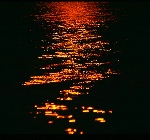Bracketing
Striving for the perfect exposure
Today’s cameras have highly sophisticated exposure systems. Most of the pictures you take will be correctly exposed - especially if you use print film.
Still, sometimes you will find that a picture is much too dark - or so bright that you cannot distinguish any detail. this may even happen with a professional camera!
The reason is that cameras do not see the world as we do. They work on the assumption that everything is equivalent to a special hue of grey.
Usually, this works. But if you are taking pictures that are mostly very bright (like snow), the camera will automatically make them darker - or brighten up black objects.
On print film, you will only see this effect when it is very pronounced - slide film is much more critical. Even a slight under- or overexposure may completely destroy your picture.
The best way to prevent this is to take several shots of the same subject with different exposures. A few of them will be overexposed, others will be too dark. Chances are, however, that at least one shot is perfect.
Often, this will be the shot taken at the exposure “recommended” by your camera anyway. On other occasions another shot will be much better.
Many cameras have an exposure compensation control allowing you to knowingly over- or underexpose your photos (don’t forget to reset it afterwards!) others (like my Minolta) even have an automatic bracketing feature.
Usually, bracketing by 1/2 f-stops will yield good results. Some cameras even let you bracket in 1/3 f-stops giving you a very wide choice of pictures to choose from.
What interval you use depends on the subject: very dark or bright objects (like the snow) may differ much more than 1 f-stop from the suggested exposure value.
If you take 7 shots with a 1/3 interval, the exposures would still not be correctly exposed (-0.9; -0.6; -0.3; 0; + 0.3; +0.6, +0.9). If you bracket in full f-stops, you may miss the “perfect” value by 0.5 - which is quite a lot with slide film!
It takes a bit of experience to decide when bracketing is necessary. After all, you don’t want to take several versions of every picture! After all, is there anything more disappointing in photography than throwing away a slide that could have been the shot of a lifetime?
Bracketing is often required when the main subject is very bright or dark, or when you are shooting into the direction of the sun. It may also help with very contrasty subjects, but if you take a picture of a dark gorge under a bright sky, one part of the picture will be too bright and/or another one too dark, no matter how many exposures you try! (The best way of overcoming this is darkening the sky with a filter).
Sometimes you do not have to really bracket in both directions: for example, lots of bright sky in a wide-angle shot may fool your camera into underexposing a picture.
Just in case, I’d take few “over”exposed shots in addition to the normal version produced by the automatic, - but I wouldn’t intentionally underexpose any photos.
By the way: some films have “incorrect” ASA ratings, for example, my favourite slide film (Fuji Velvia) is rated at 50 ASA, but actually is closer to 40 ASA.
This contributes to the extreme saturation, but also makes this film very intolerant of underexposure.

